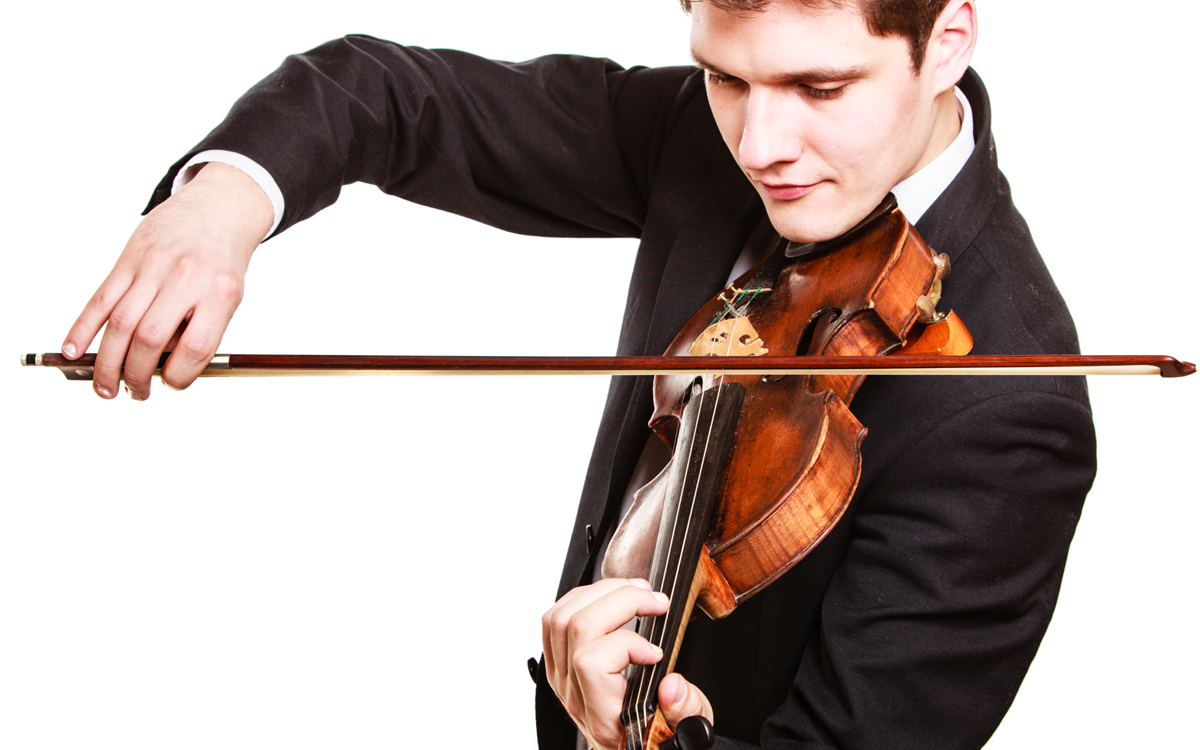
What Is the Arco Violin Bowing Technique?
The arco violin bowing technique is the most common method of playing the violin, and simply means to play with the standard bowing technique. The arco violin technique can be used on a wide variety of stringed instruments such as the violin, viola, cello or double bass. Using a bow creates a long and sustained sound, allowing the notes to melt into one another.
The Different Parts of the Violin Bow
The bow , in its most basic form, is a stick with many hairs tightly stretched between each end. The photo below illustrates the different parts of the violin bow.

How to Hold a Violin Bow to Play the Violin Using the Arco Violin Bowing Technique
To play the violin using the arco violin bowing technique, it is best to hold the violin bow lightly, as shown in the following image. Your thumb will act as the fulcrum, supporting the bow. The index finger is used to put pressure on the bow and to control the sounding point, along with the ring finger. Finally the fourth finger ( pinkie ) is used to lift the bow back up off the strings, removing pressure.

How to Hold a Violin
Holding a violin incorrectly can make it more difficult for you to produce good and consistent sounds when bowing. By following a few simple steps you can achieve a good sound while being comfortable.
- Whether you are standing or sitting, make sure you have good posture and a straight back.
- The violin should rest on your collarbone, and your chin should be lightly resting on the chin rest. Angle your head slightly to your left so that you chin runs parallel to the chin rest.
- The violin should be pointing straight out in front of your nose, not dipping ( bad posture can cause the violin to dip ).
- The violin neck should rest gently between the thumb and forefinger of your left hand. Ensure that the weight of the violin is evenly distributed between your collarbone and thumb, and that your fingers are not pressing on any of the strings.

Arco Violin Bowing Technique
When placing the bow on the string of your violin, place the hair of the bow on the string near the bow frog ( see the names of the bow parts above ). The bow should be at a right angle to the string. Drawing the bow slowly across the string all the way to the tip is called a down stroke .
When playing a down stroke, make sure your right wrist and forearm are relaxed, as this will create the best sound. After you reach the tip of the bow, hold it steady for a moment and then slowly push the bow back across the string until you reach the frog. This is called an up stroke . Practice your down stroke and your up stroke several times on an open string until you can produce a clear sound. This is a good foundation for future practice sessions, and will help you to create a consistent sound when playing other notes. If you are having trouble getting a consistent sound, you may need to rub a little more rosin on the hair of the bow.
To make sure you sound only one string at a time, you will need to lower your bowing arm slightly when moving from a lower string to a higher string ( e.g., open G to open D ), and raise the arm slightly when moving from a higher string to a lower string ( e.g., open E to open A ). When moving between strings,
do not lift your bow off the strings. You can change the sound to the new string by changing the angle of the bow.
It is important to work on bowing technique with a teacher right from the beginning, so that you do not develop any bad habits which will have to be corrected later. Experimentation is also key - find what feels the most comfortable and natural for you when playing. Most importantly, have fun.












